Taking Care of Business – Travel & Toilets
It’s not the glamour side of travel, but let’s face it, most people use toilets on a regular basis. You can learn a lot about a country from their toilet facilities, no matter what you call them. Knowing the terminology is important so you can ask for one when you need one – loo, thunder box, washroom, water closet or lavatory…
…or bathroom or restroom, as Americans often refer to them. People from other countries sometimes laugh at this, as usually at public venues, there’s no bathtub and we aren’t really resting.
As you travel around the world, you’ll discover there are many different shapes and sizes of toilets and restrooms, as well as varying customs. In Australia, for instance, toilets are often in a separate room from the sink and shower, which makes sense as two people can use them simultaneously and still retain their privacy. Sometimes the bathrooms come with interesting art, like this one in Tasmania.
Not only is New Zealand incredibly scenic, you can even find bathroom facilities out in nature…
…and some are eco-friendly.
Other restrooms can be more sterile and geared for group use, like at this holiday park on the South Island of New Zealand, and if water shortage is an issue, the showers may come with pre-set timers.
In Thailand, there are western toilets and eastern toilets, utilizing sitting or squatting techniques, and they often come with a bucket of water or sprayer hose in lieu of, or in addition to, toilet paper.
Some bathrooms in Thailand may not separate the shower from the rest of the equipment. And you might also find a few nice touches in lighting, like this paper lantern, or beaded black chandelier in Chiang Mai…
In any one country you may see everything from very basic, to ordinary, to quite luxurious. If you’ve got more disposable income, you can get really fancy.
You might even be asked to rate your experience, like at this airport restroom in Bangkok, where they have a “Feedback Toilet.”
In Japan, make sure you take off your shoes and don slippers before entering a home, then trade them for special toilet slippers before going into the necessary room.
With Western-style toilets in Japan, things get a little more complicated, both in plumbing as well as in customs. Confused? Never fear, many toilets come with instructions…
Japanese toilets may spray you, front and back, with varying pressure based on your preference, blow you dry, and even play you a tune! Some have a toilet lid that opens automatically when you enter the stall. But the best part is the heated seat – I could make a fortune selling these in Michigan!
They get even more elaborate, such as this restroom in Osaka airport, where you have your choice of two kinds of toilets, as well as a special seat to hold your child while she waits, and even entertainment to distract her…
In fact, there are so many instructions here, you might be in danger of missing your flight!
There are, of course, many Japanese-style toilets in Japan. If you see a sign with what looks like the side-view of a slipper, recognize what this symbol is for, and note that, male or female, you face the hooded end.
So far in my travels, I’ve missed India and Africa, and plenty of other places, so this is not a comprehensive list – I can’t help you out everywhere – but I do also have quite a bit of Europe covered, both Eastern and Western.
For example, in Croatia public toilets can sometimes be hard to find. And when you do find one, be prepared to pay for the privilege. Sometimes there’s an attendant, but sometimes you need exact change. If you don’t have it, you might be out of luck, and looking for an alternative!
Croatia has its own version of the squat toilet, like this shiny one in a national park, as well as western-style bathrooms, some with extra amenities, like an ashtray installed by the sink.
This pay-to-pee system is prevalent in Western Europe as well. Once, I got off a train in Italy and raced for the restroom (some trains do have toilets on board, but it’s kind of a moving target). I made it just in time at the station … to find out that I didn’t have the right change. A fellow traveler took pity on me and held open the door as she left, allowing me in for free. Is this a form of stealing?
Special travel alert – when you’re on an overnight bus changing countries with different currencies, do NOT spend all of your small change ahead of time, thinking you won’t need it since you’re leaving. There is often no toilet on the bus; you will make several stops, but you need change to use the toilet. (There may even be a sign saying you’re being video-monitored to make sure that you pay!) Best travel advice? Always carry a little change in the local currency for unexpected “business” expenses!
In Italy, one of the design capitals of the world, you might find some innovations, like this type of all-in-one sink, including soap, water faucet, and blow dryer, all in a row, or other types of fancy sinks…
Also, in Europe, where space is at a premium, you might find closet-sized restrooms like this one in France, that make airplane facilities seem spacious. Of course, you may also find large, oversized bathrooms in luxury hotels that include a separate shower, tub, toilet, and bidet (sorry, no photos as these aren’t often found on a shoestring budget).
In Ireland mind the instructions on the outhouse door, where you might stumble across toiletpaper-eating sheep like the ones near the outhouse at the Beehive Huts on the Dingle Peninsula.
Scotland coined the term “Garde Loo!” to warn passers by down below in the closes (narrow streets) that they were about to toss the contents of their chamber pots! In England remember to ask for the loo, or thunder box, or water closet.
Heading across the pond, in Mexico, most toilets look pretty much like the Western ones you see everywhere, but like most places in SE Asia, you cannot flush your toilet paper, unless you’re looking for trouble. Waste baskets are handily placed nearby, and instructions are often posted, though not always in your language.
Door symbols vary from traditional to contemporary, and it helps to know the words in Spanish, or whatever the native language of your current country, for “men” and “women.”
If there’s one thing I like about the U.S., it’s that we usually get to pee for free, whether at highway rest stops or restaurants or even in the more touristy destinations. The U.S. may have plenty of problems, but wins the gold medal for availability of toilets. Maybe one reason it’s called the land of the free? Some seats even come gift-wrapped…
That about covers the basics of toilet training for traveling around the world. I hope this helps prevent restroom culture shock on your next trip to someplace new and unfamiliar, and keeps you from doing the dance of the lost or confused.

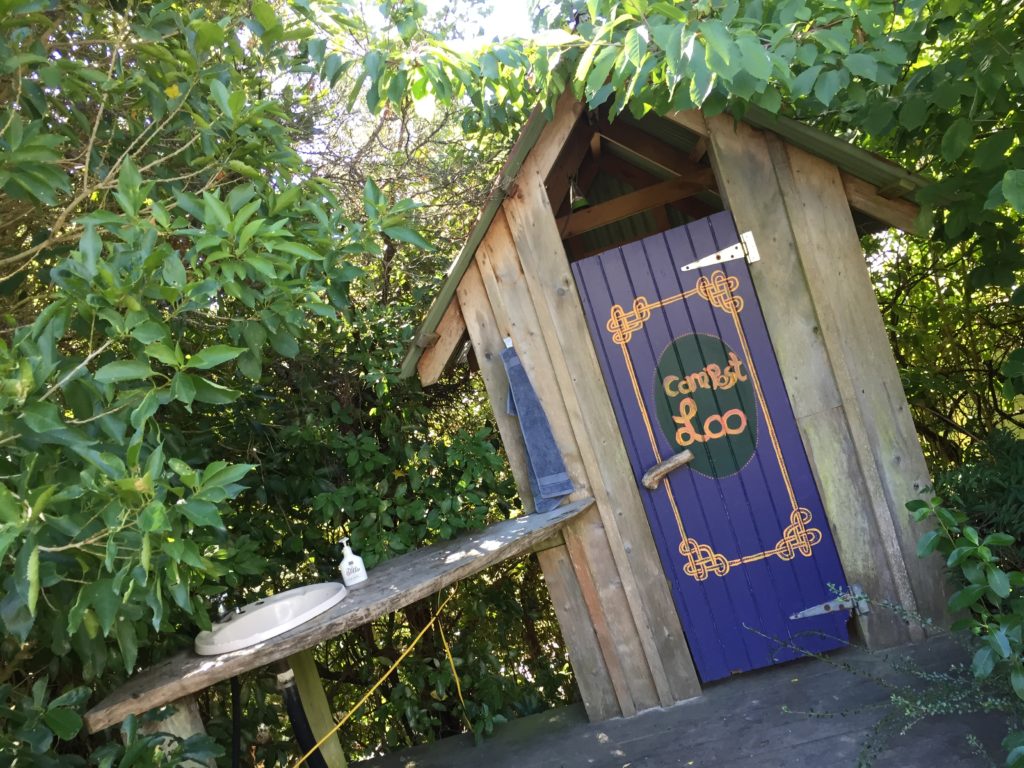
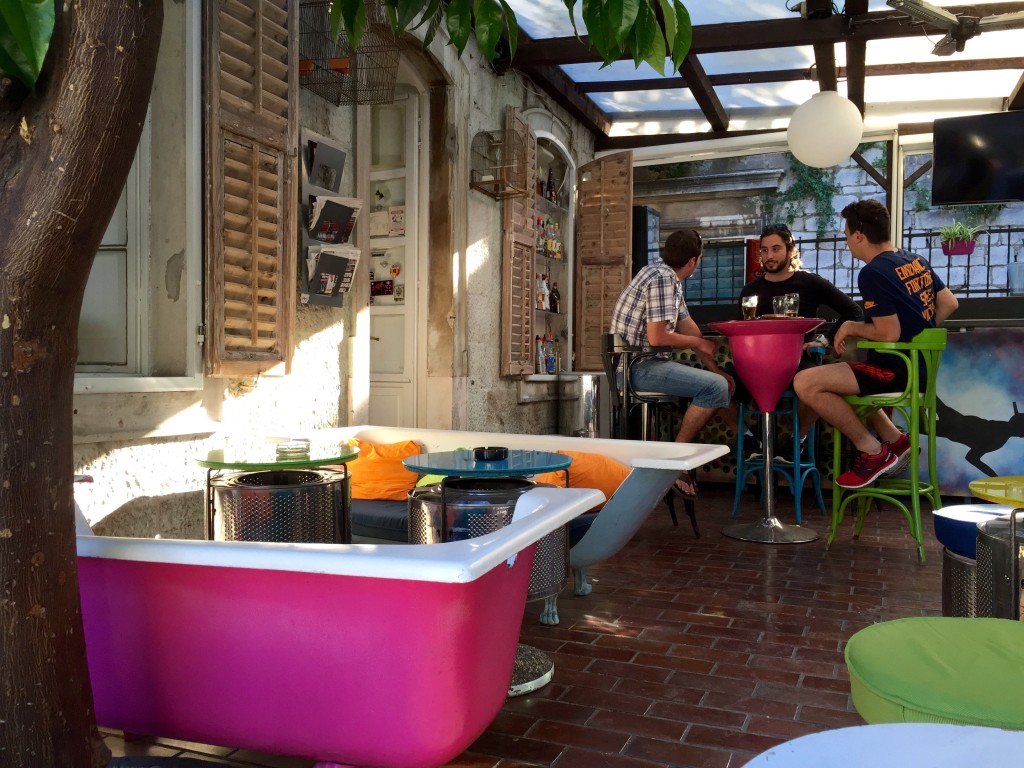
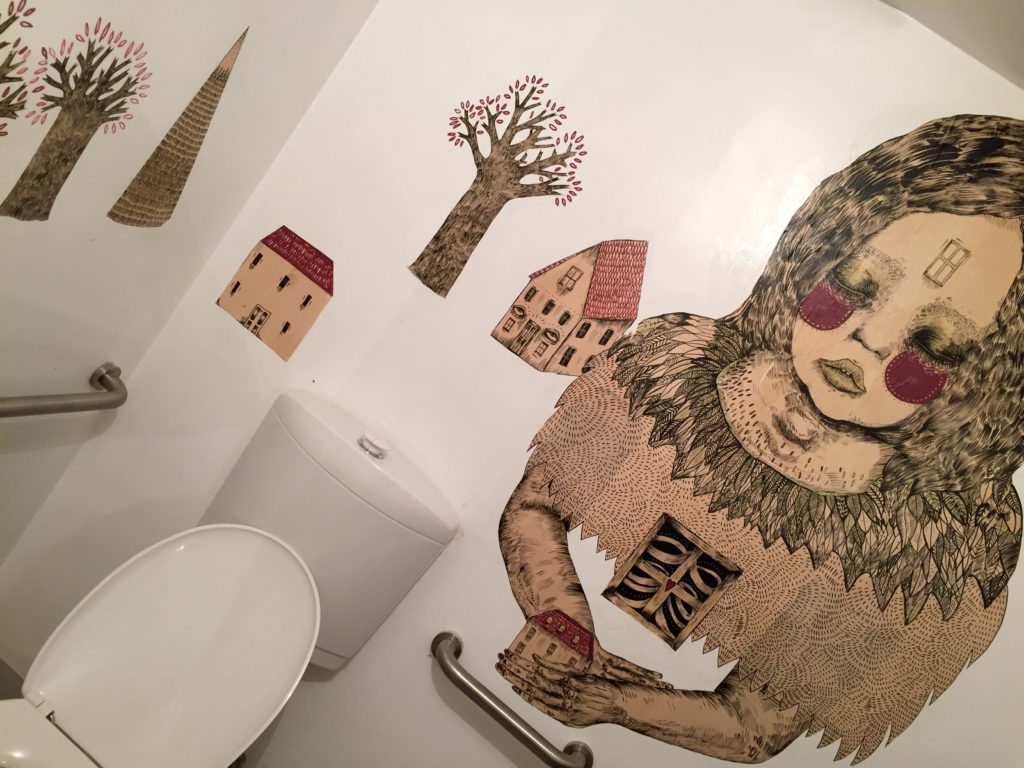
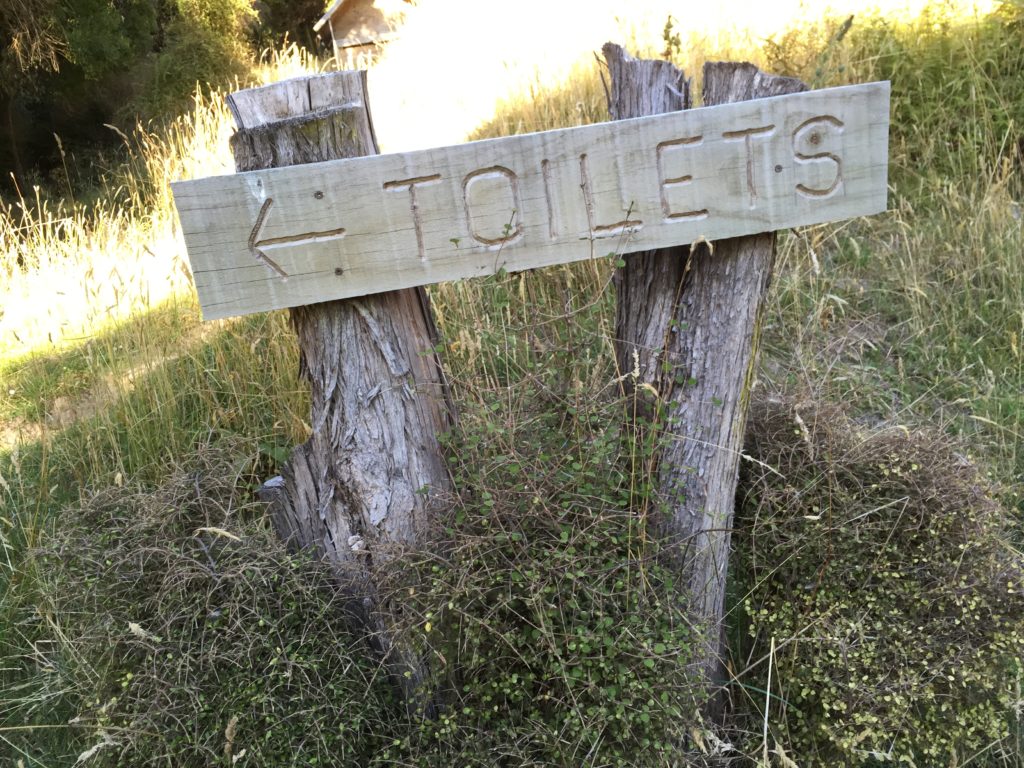
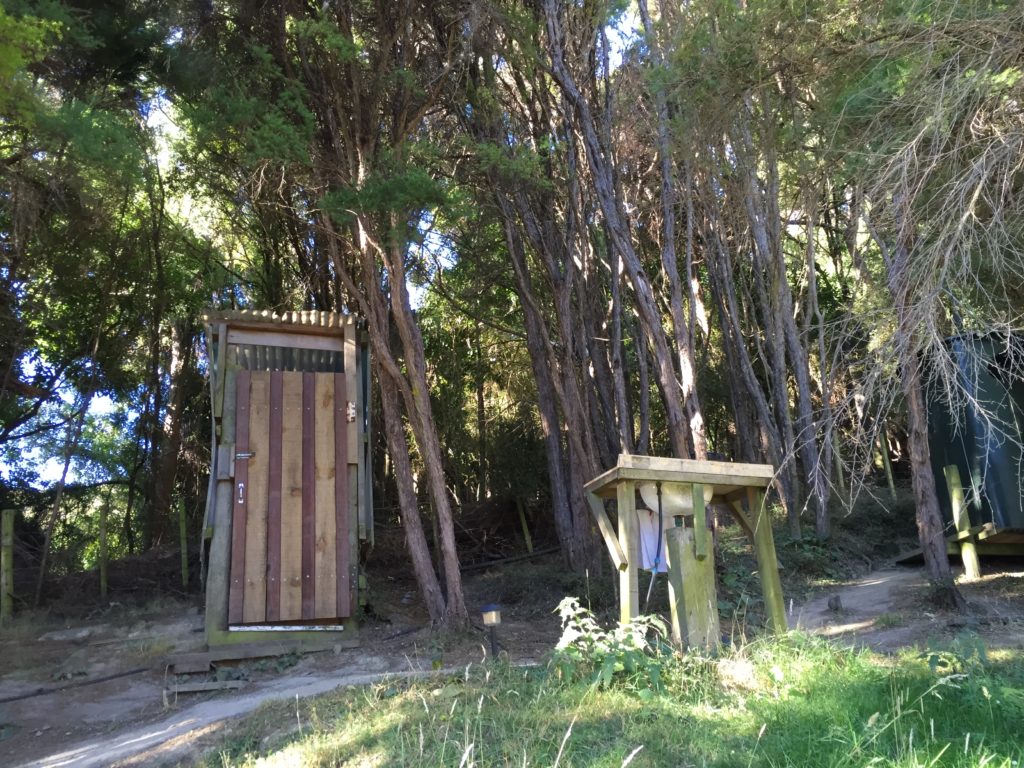
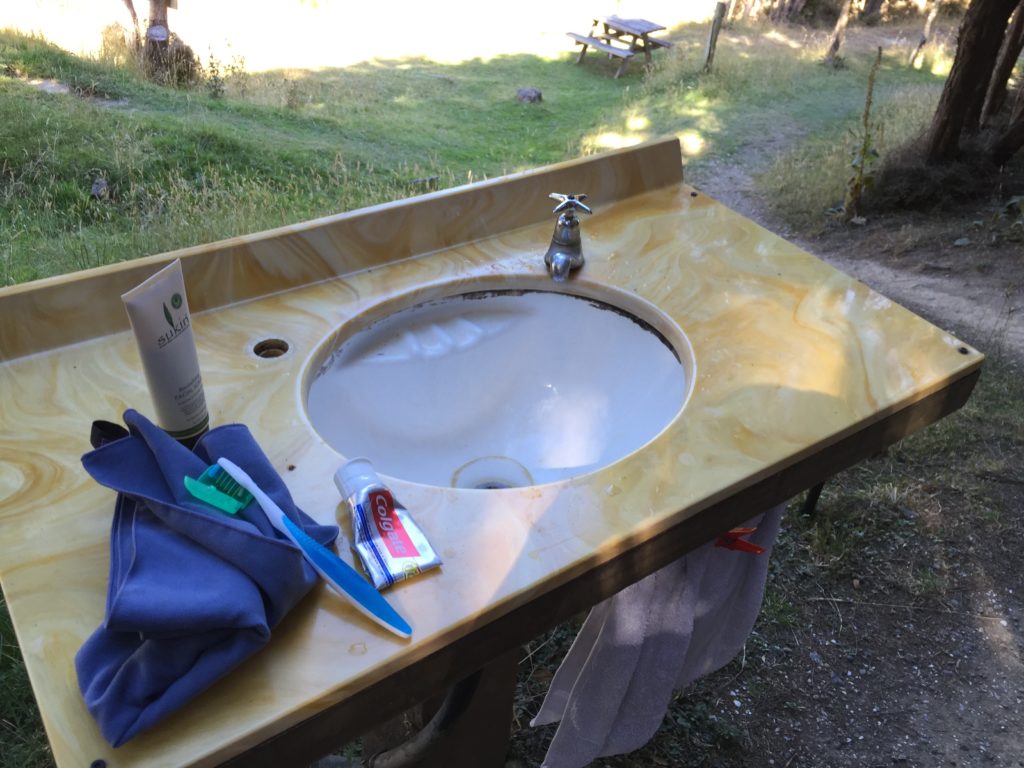
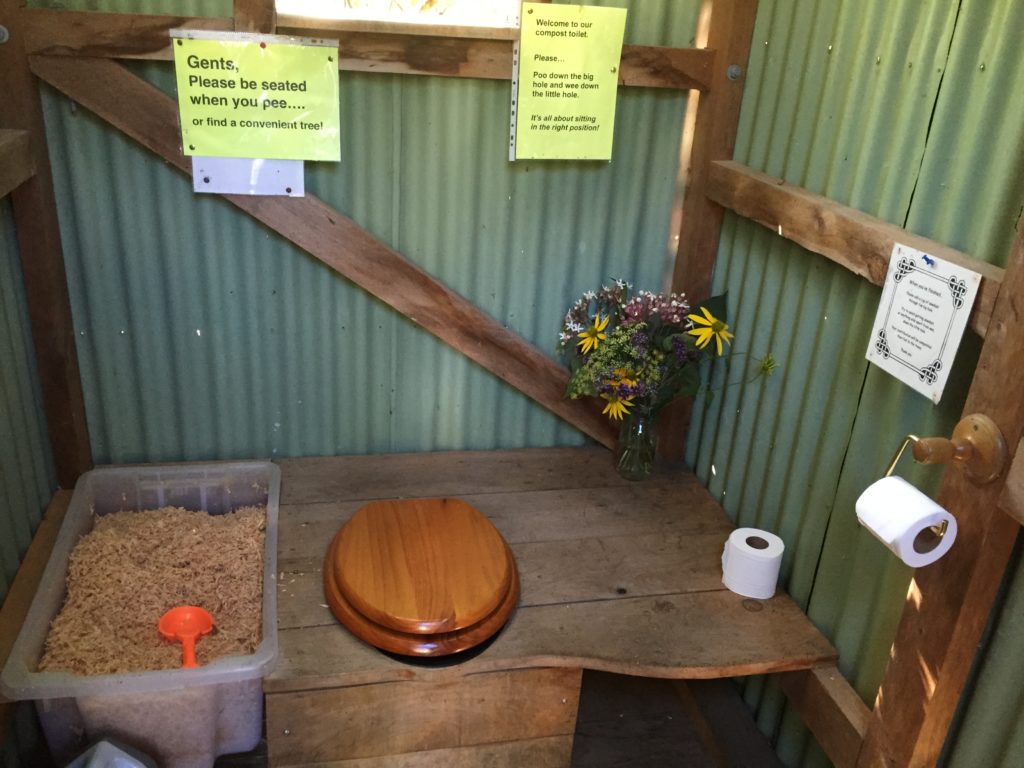
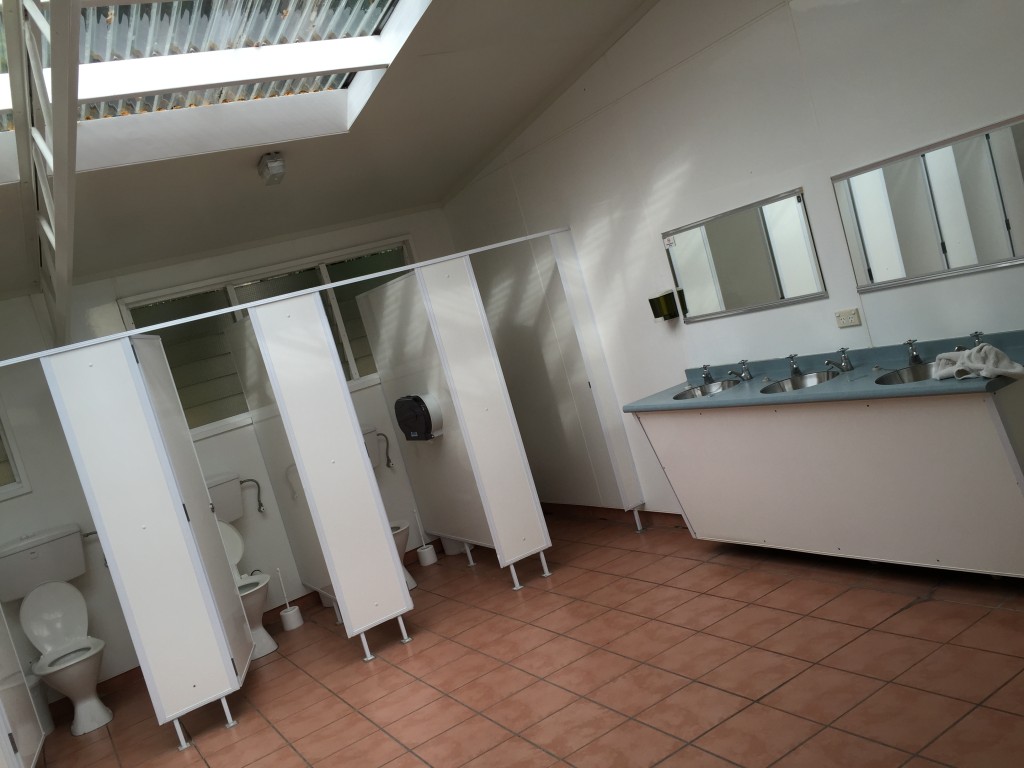
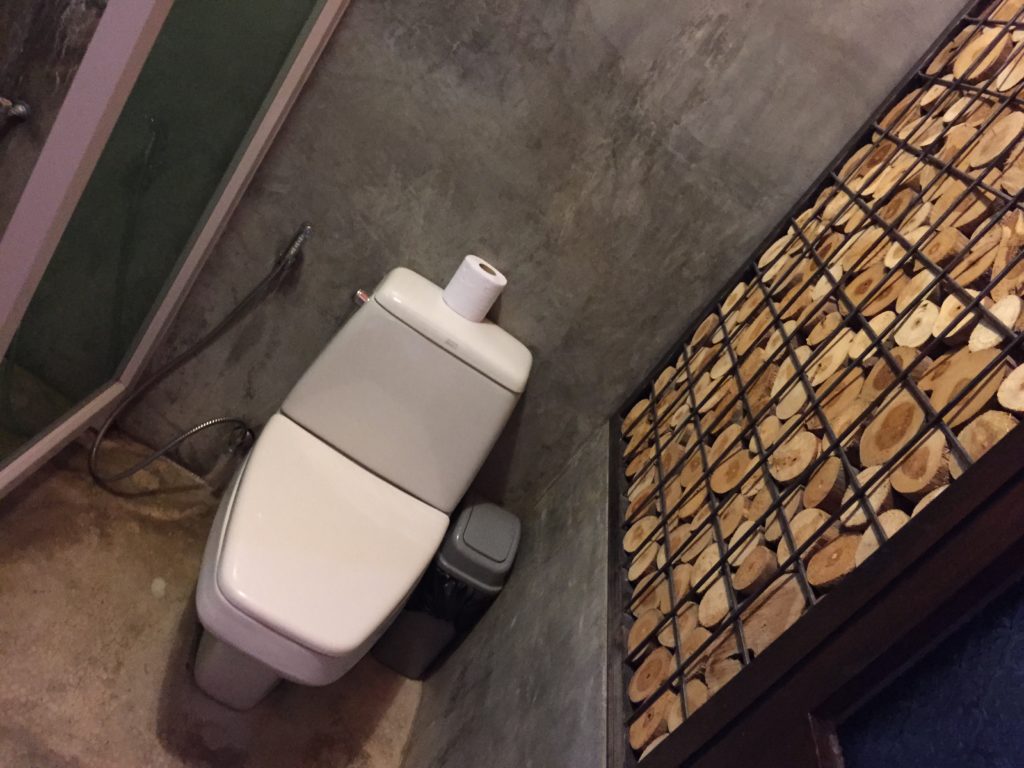
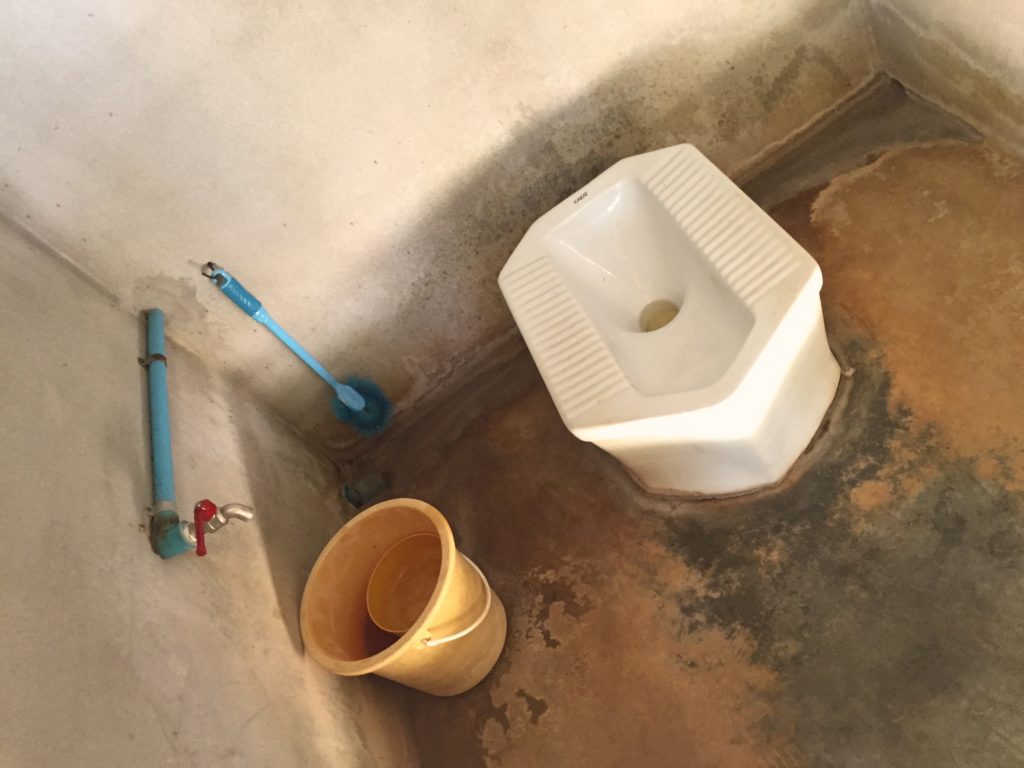
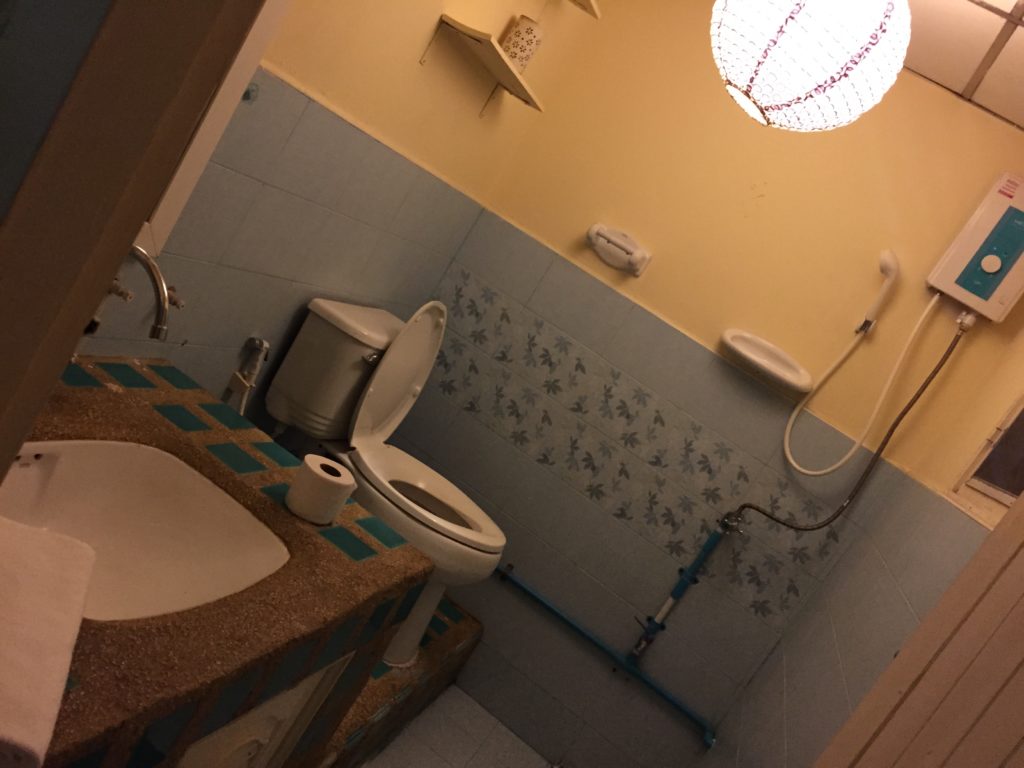
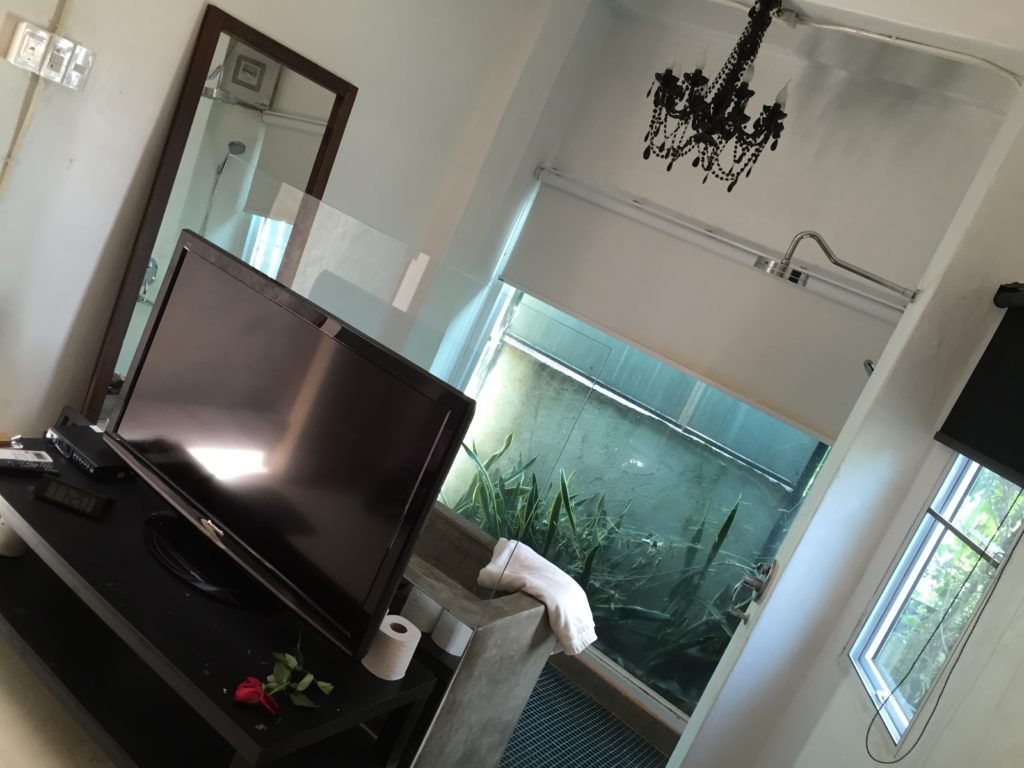
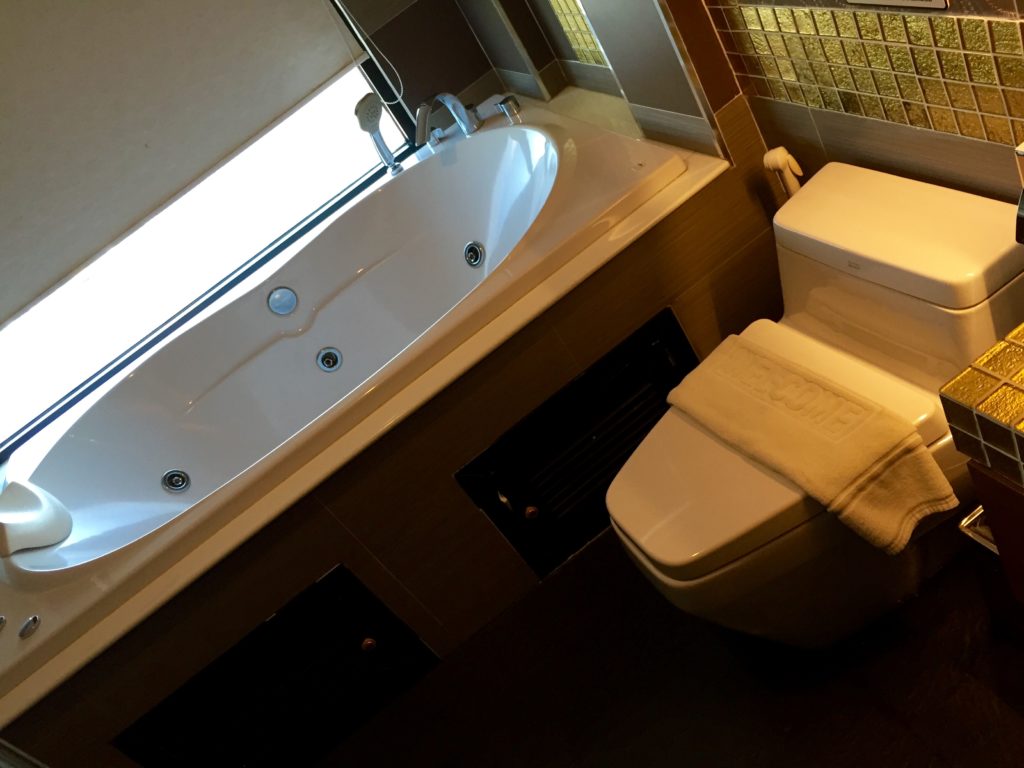
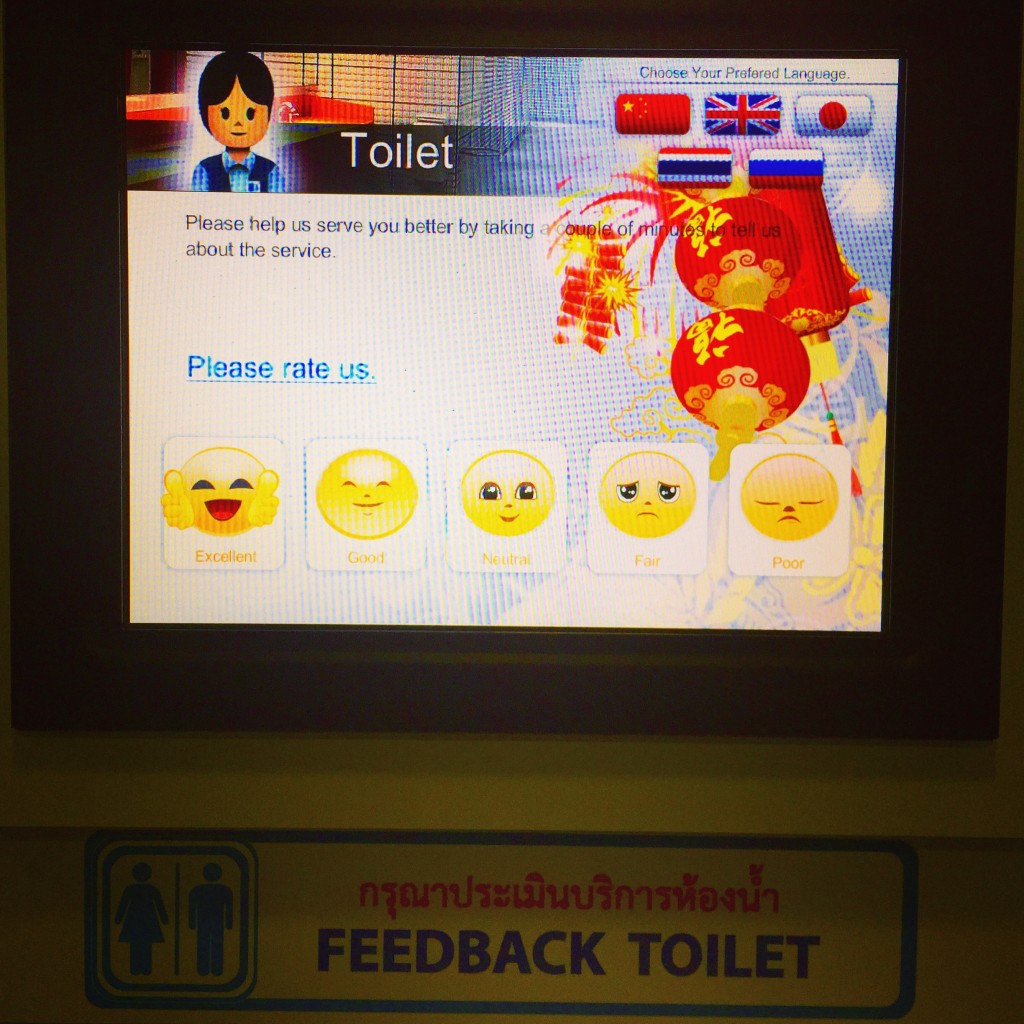
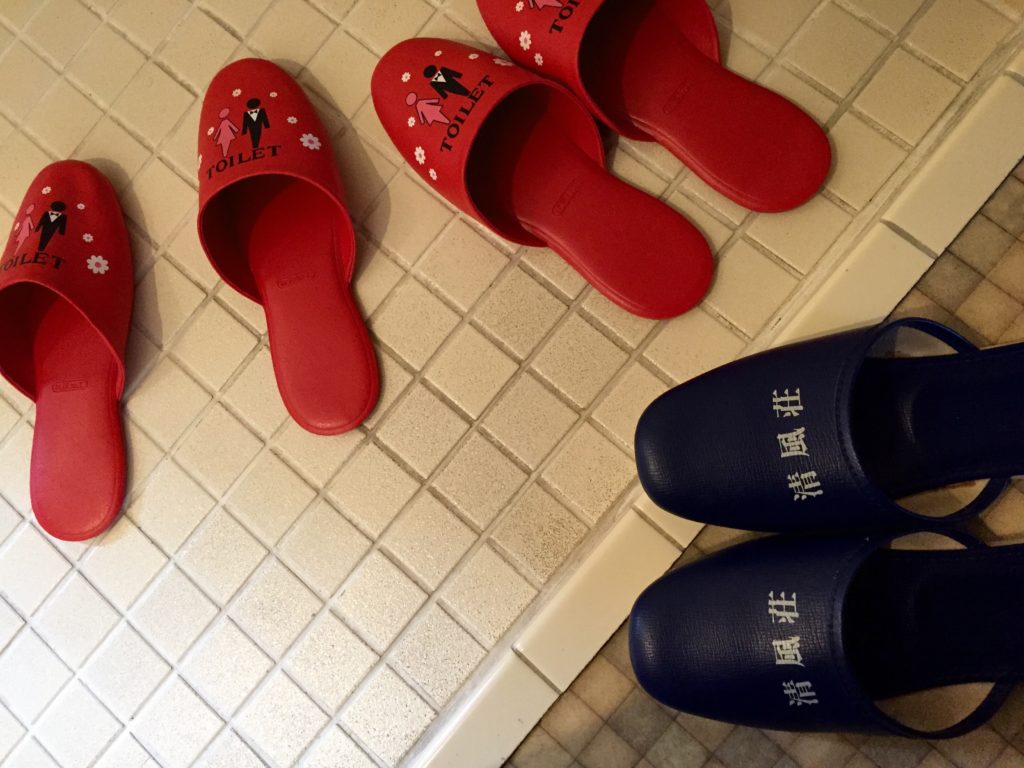
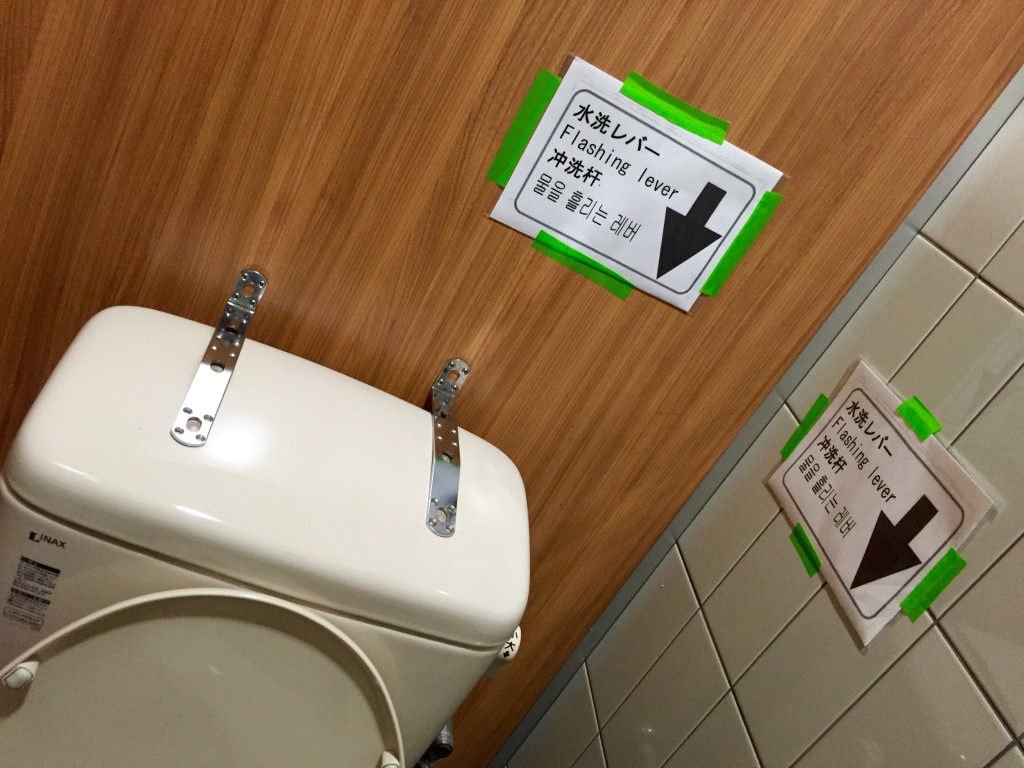
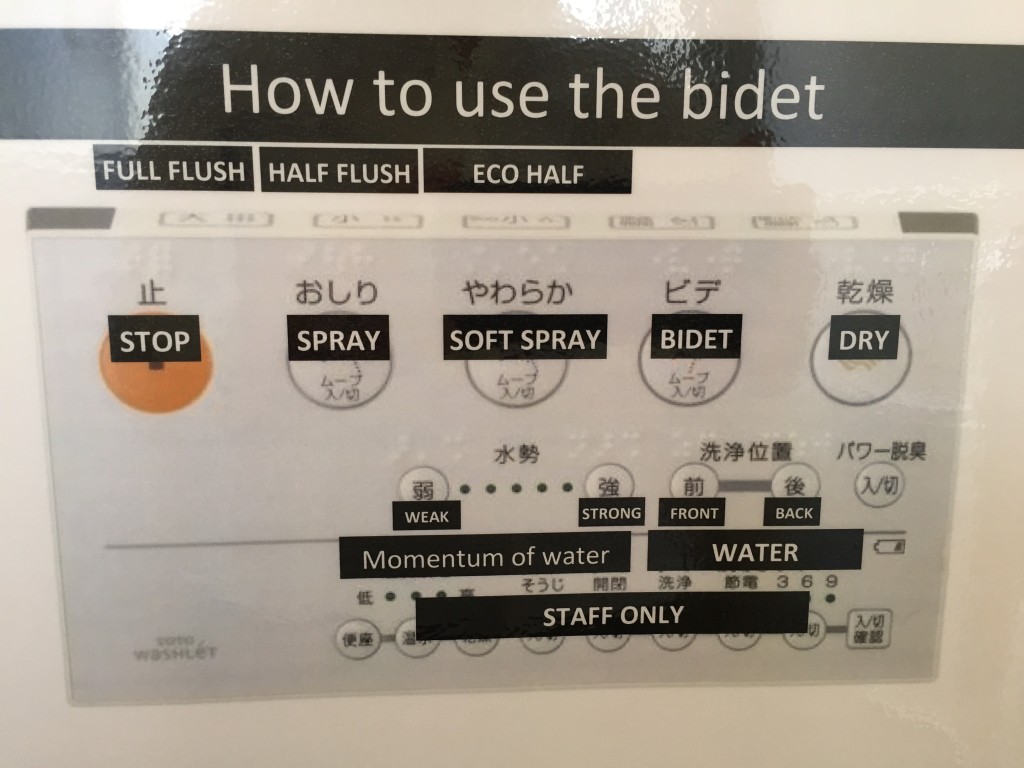
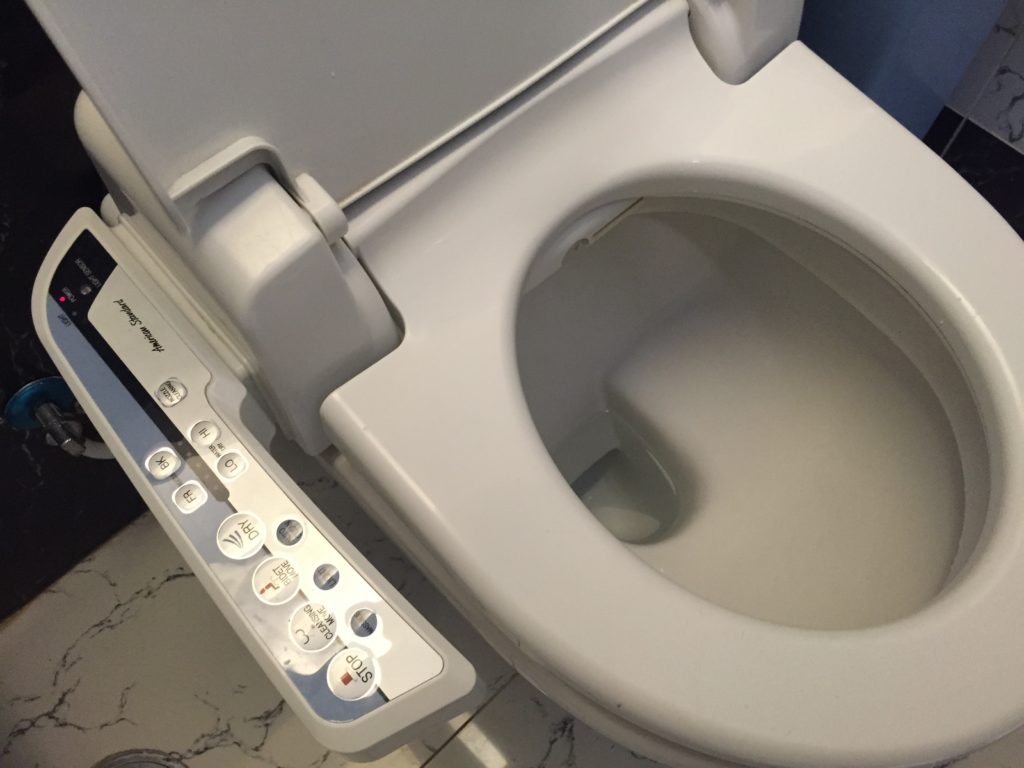
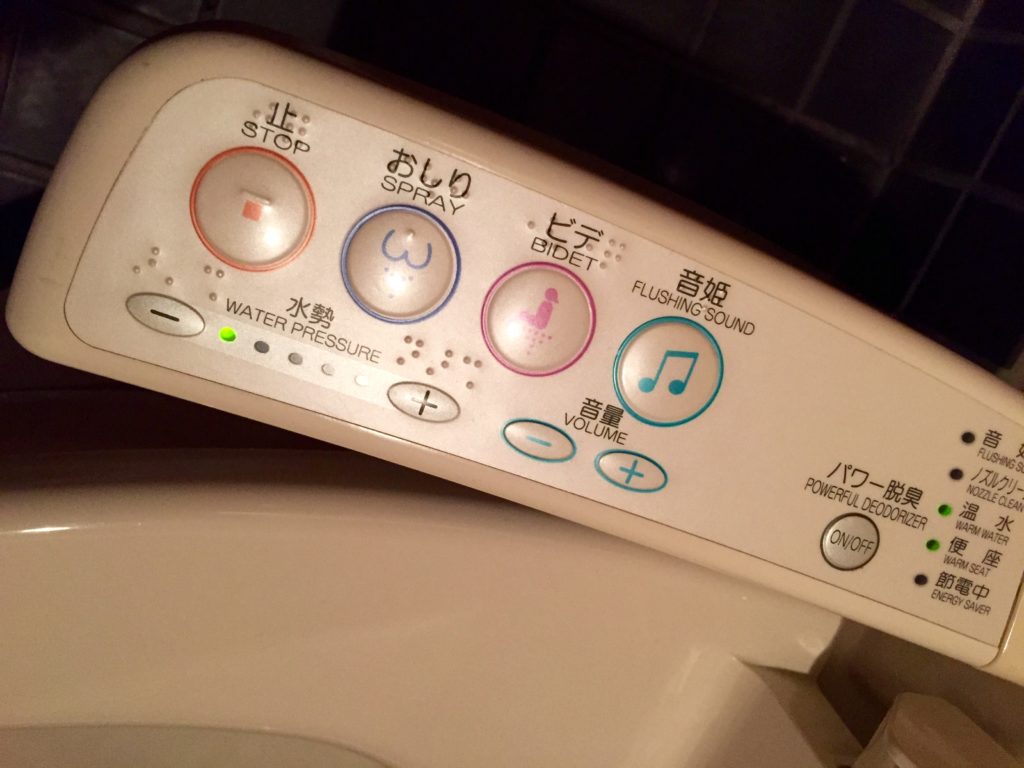
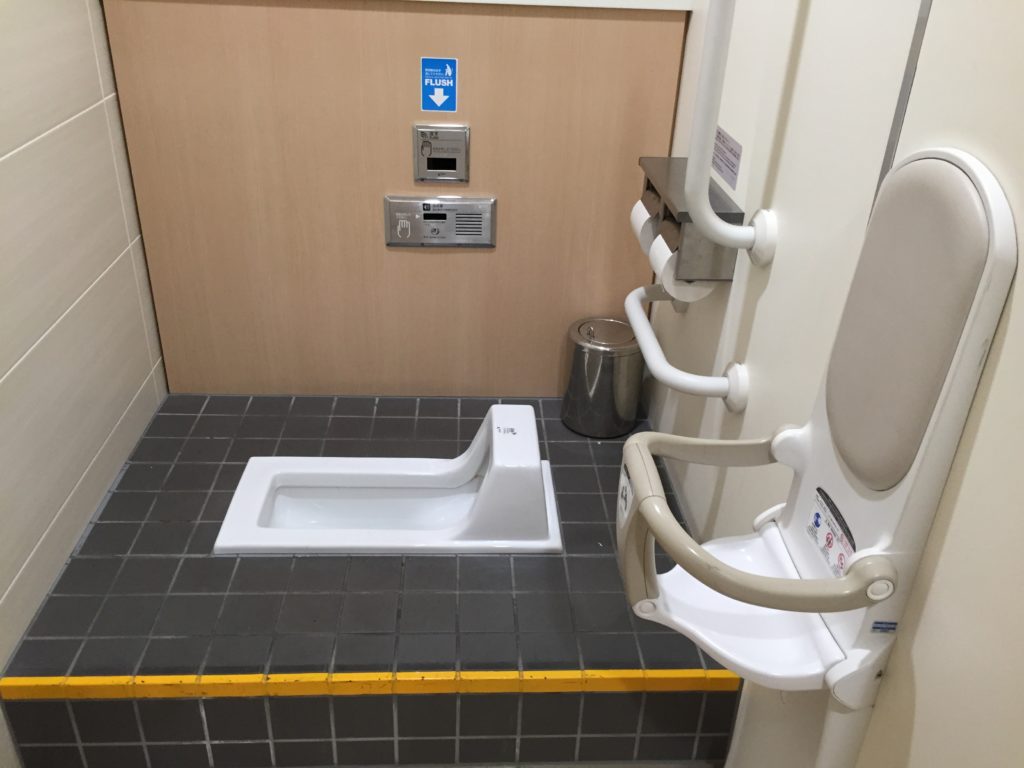
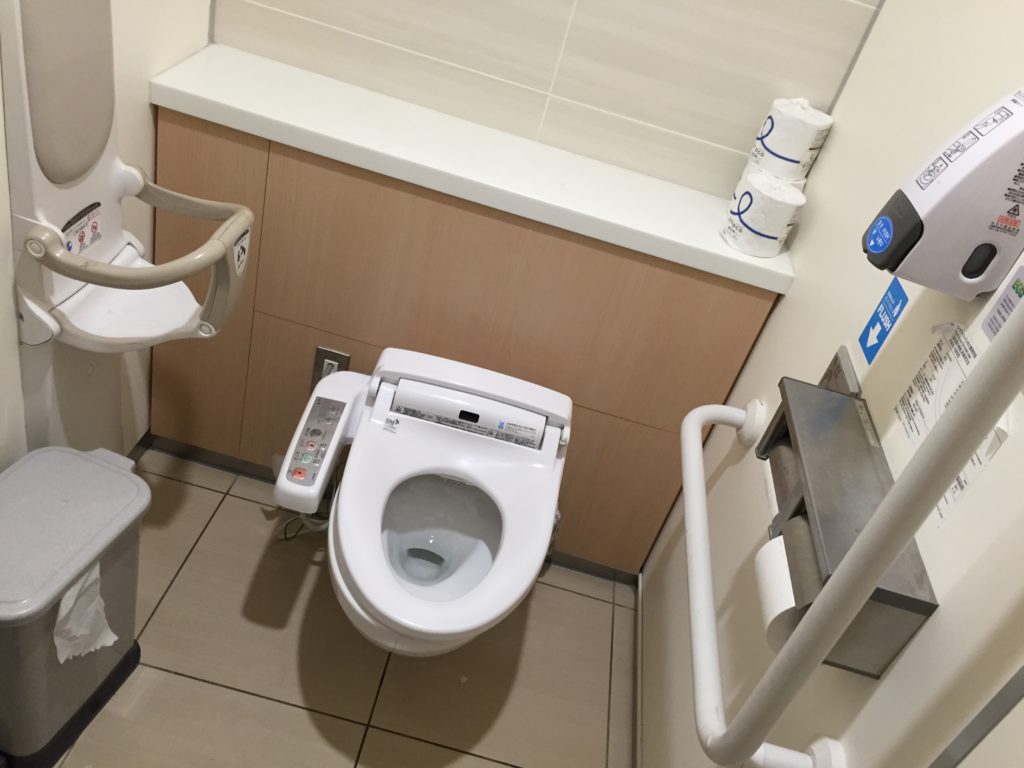
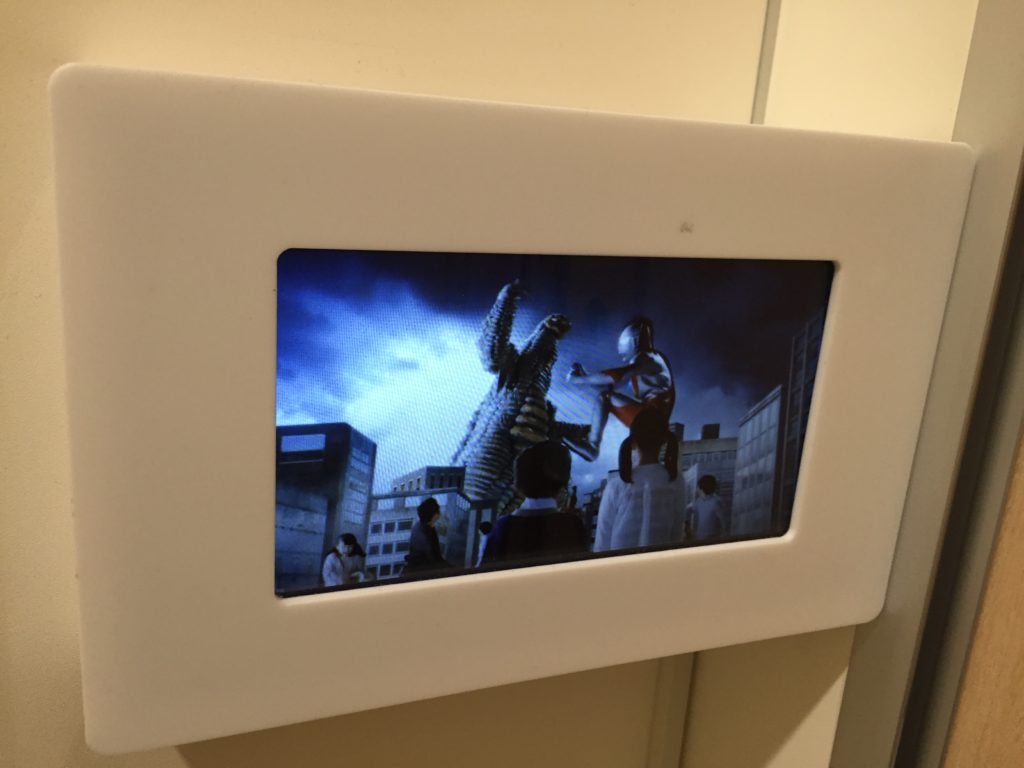
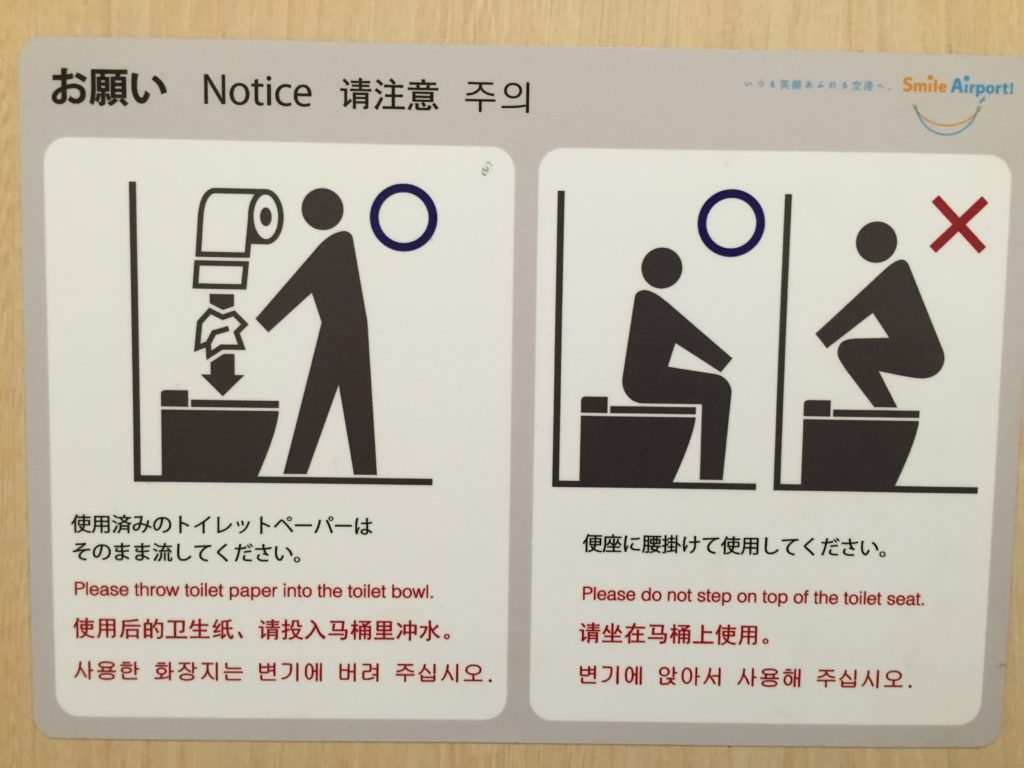
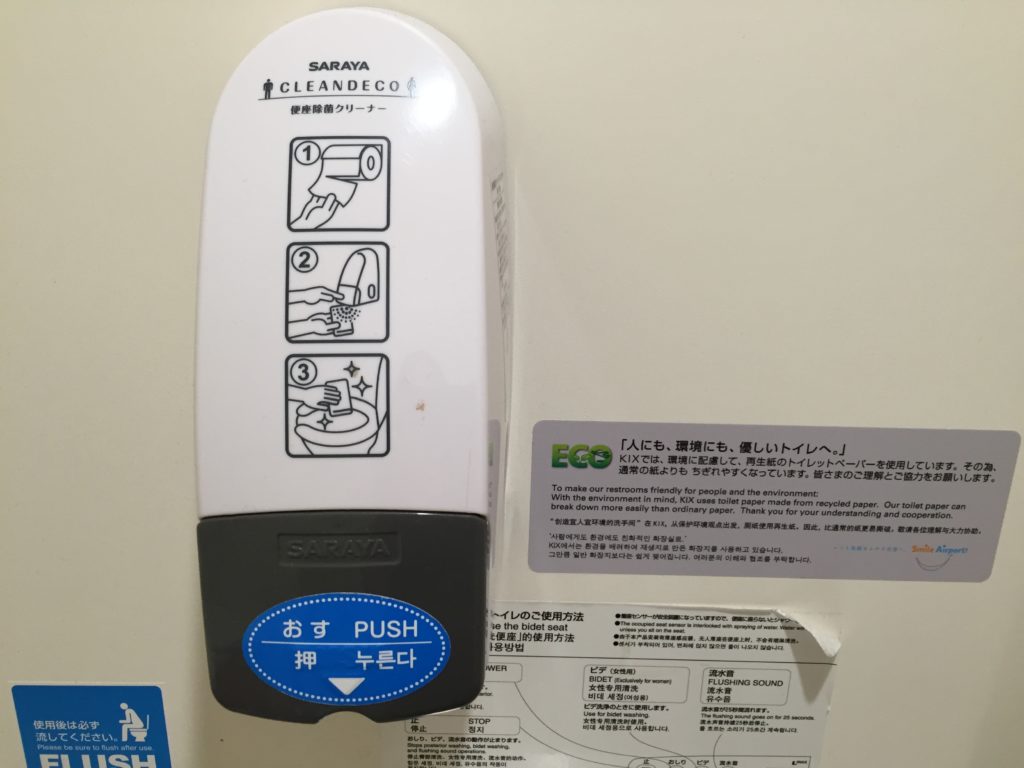
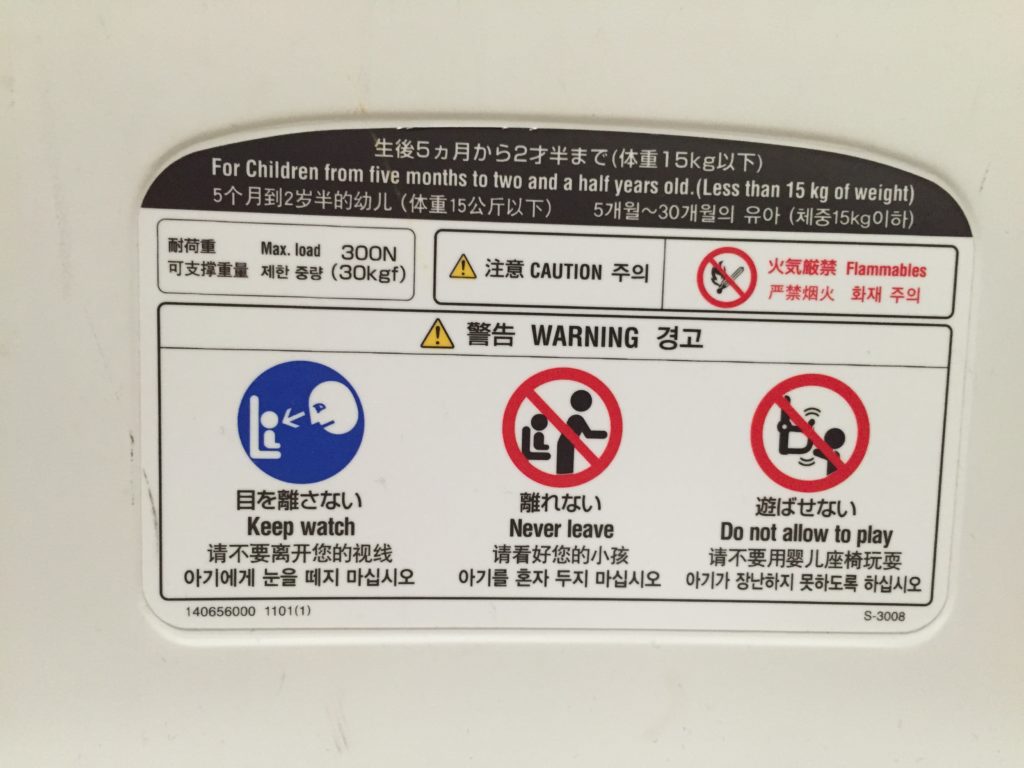
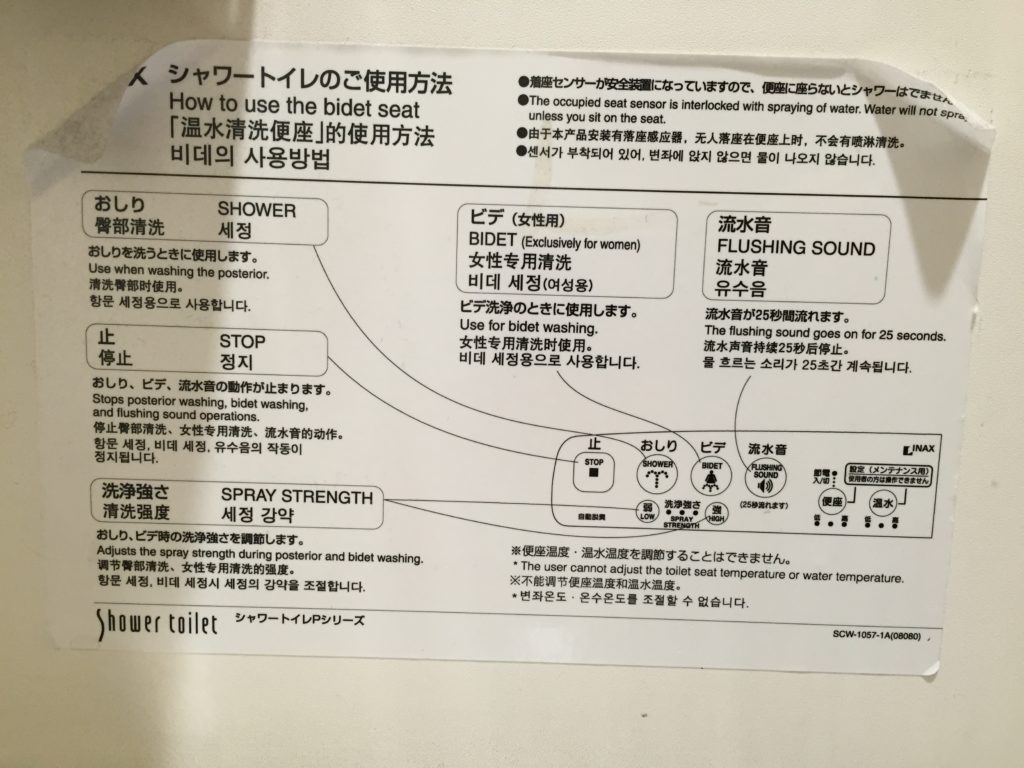

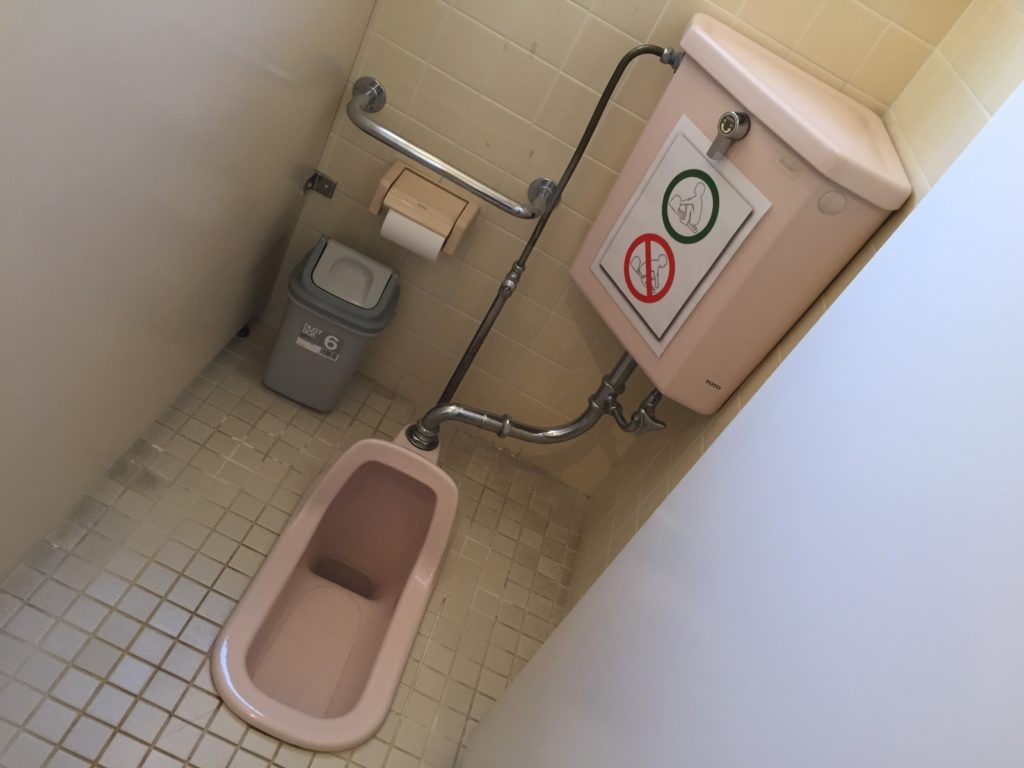
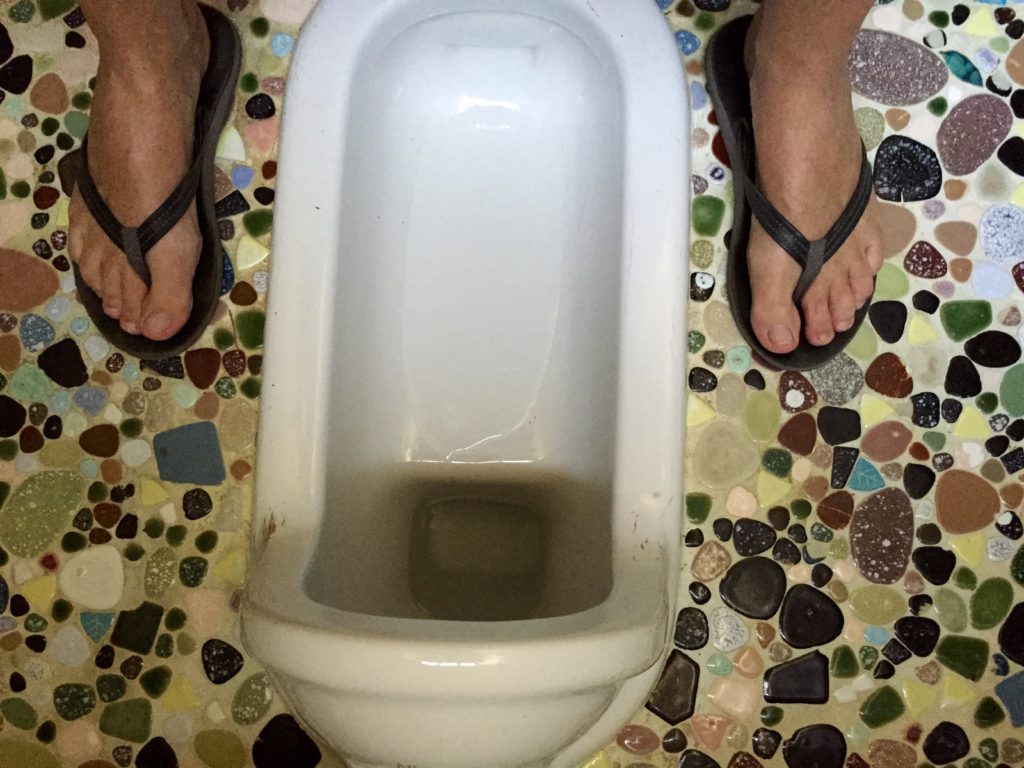
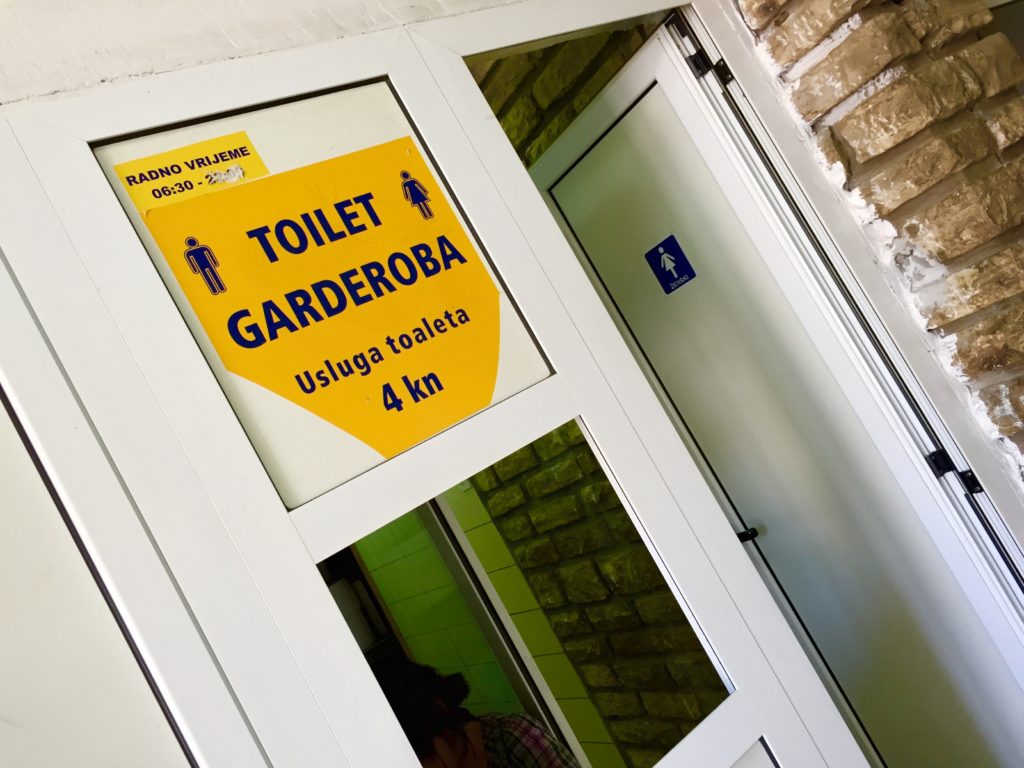

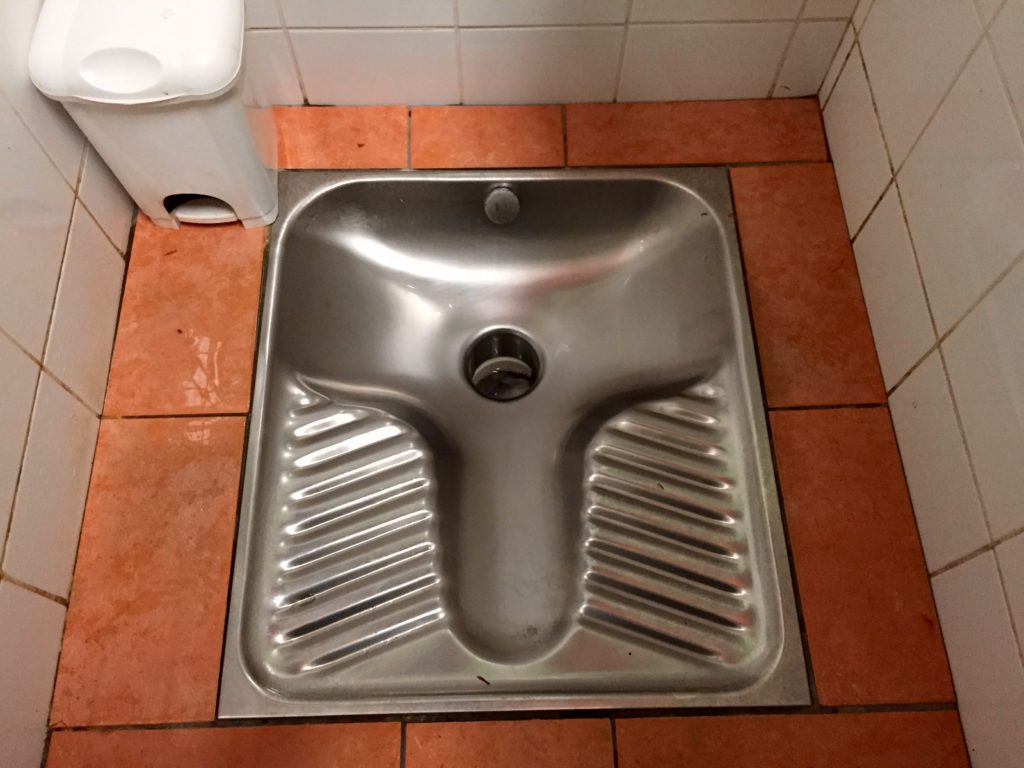
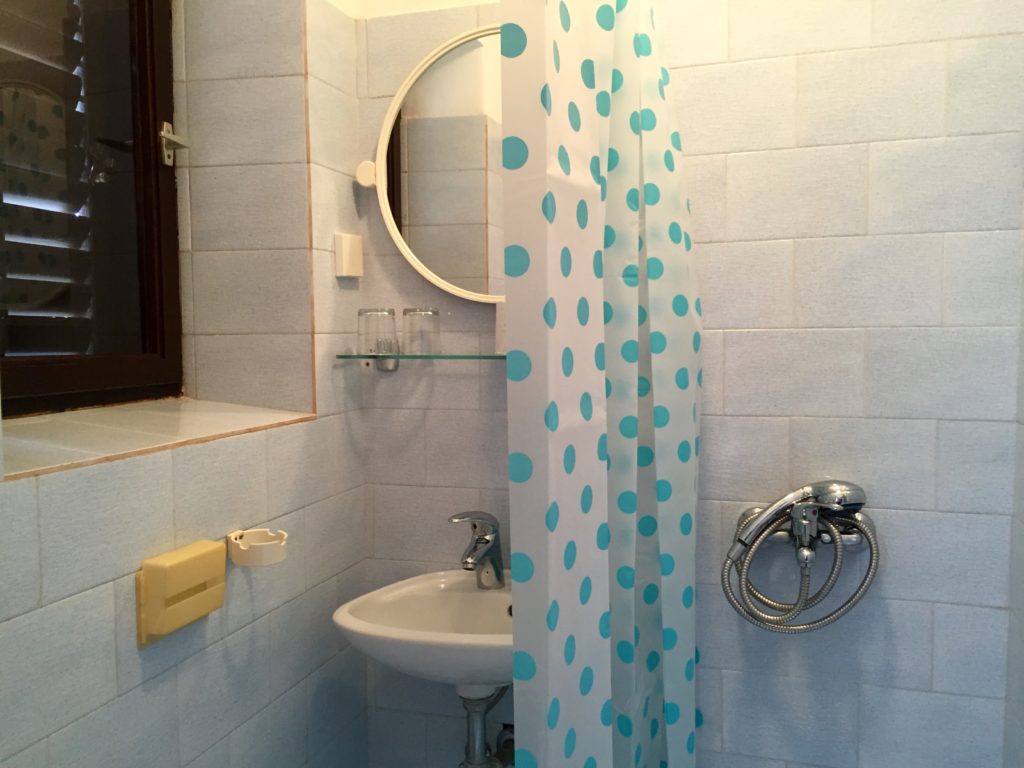
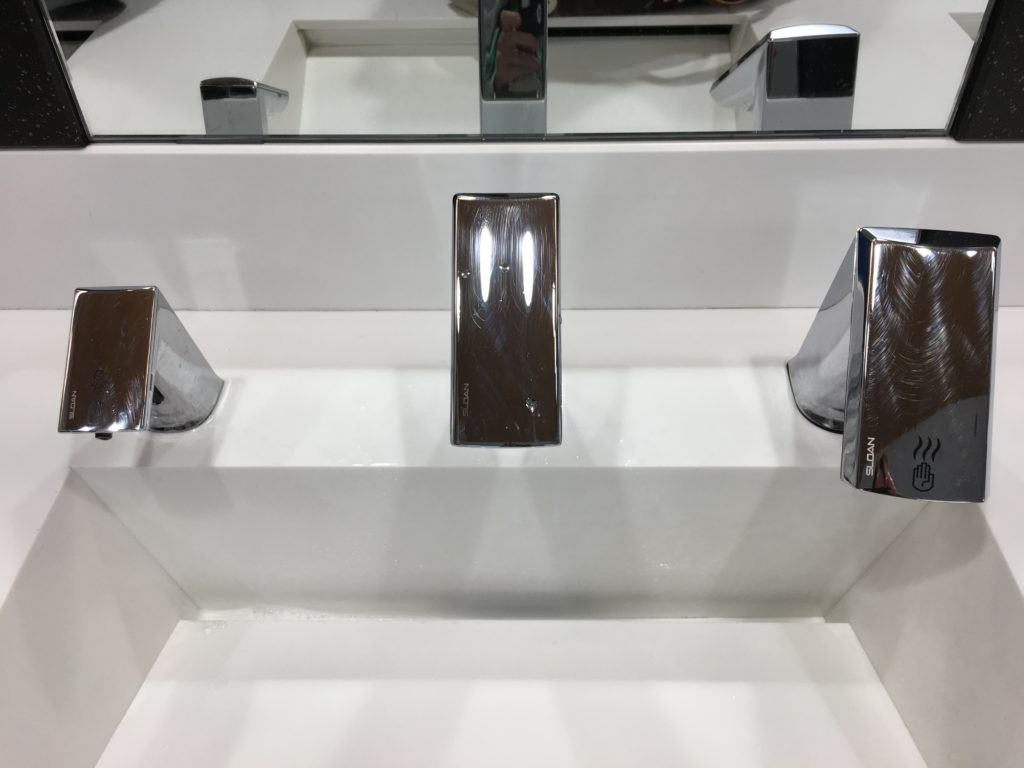
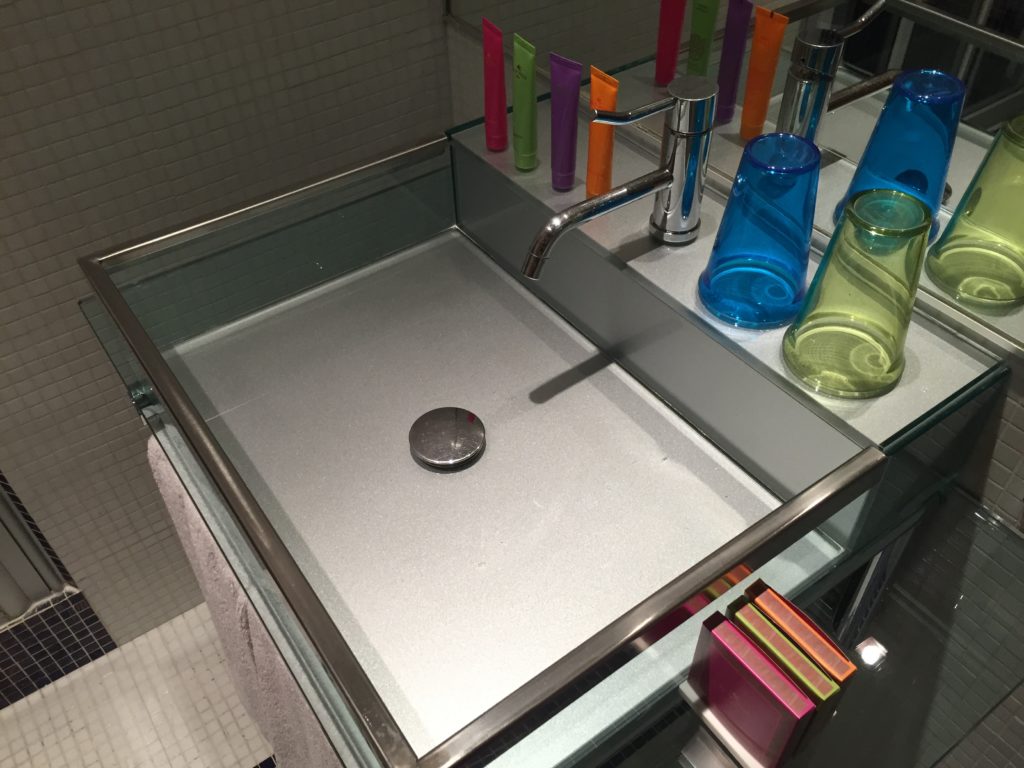
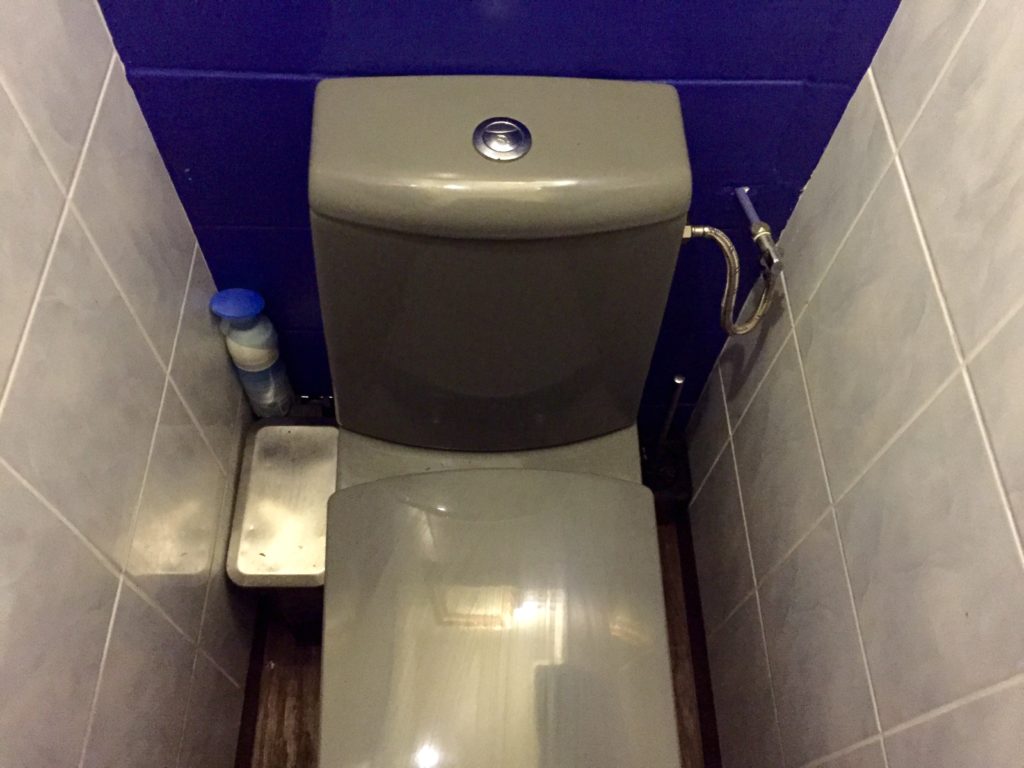
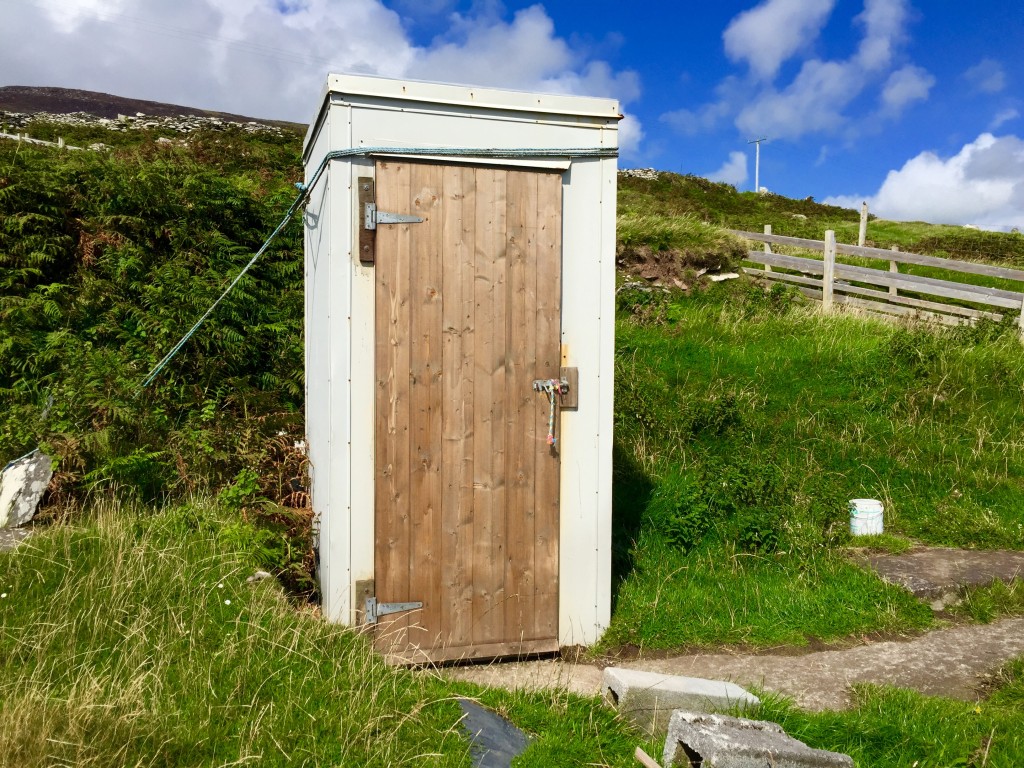
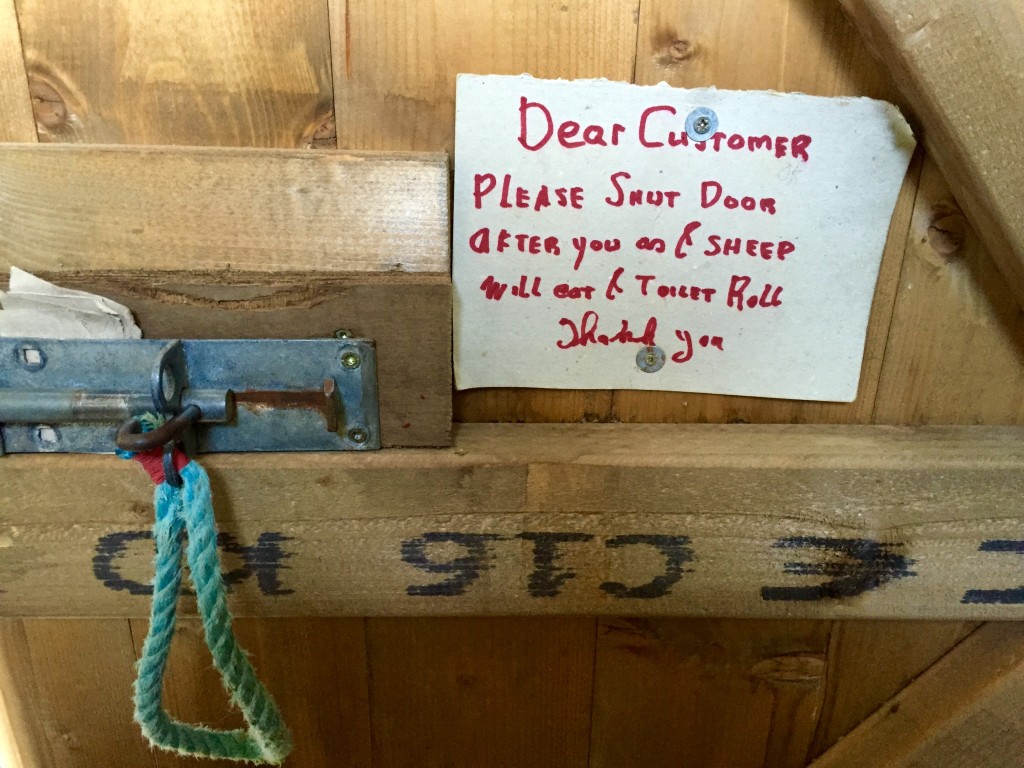

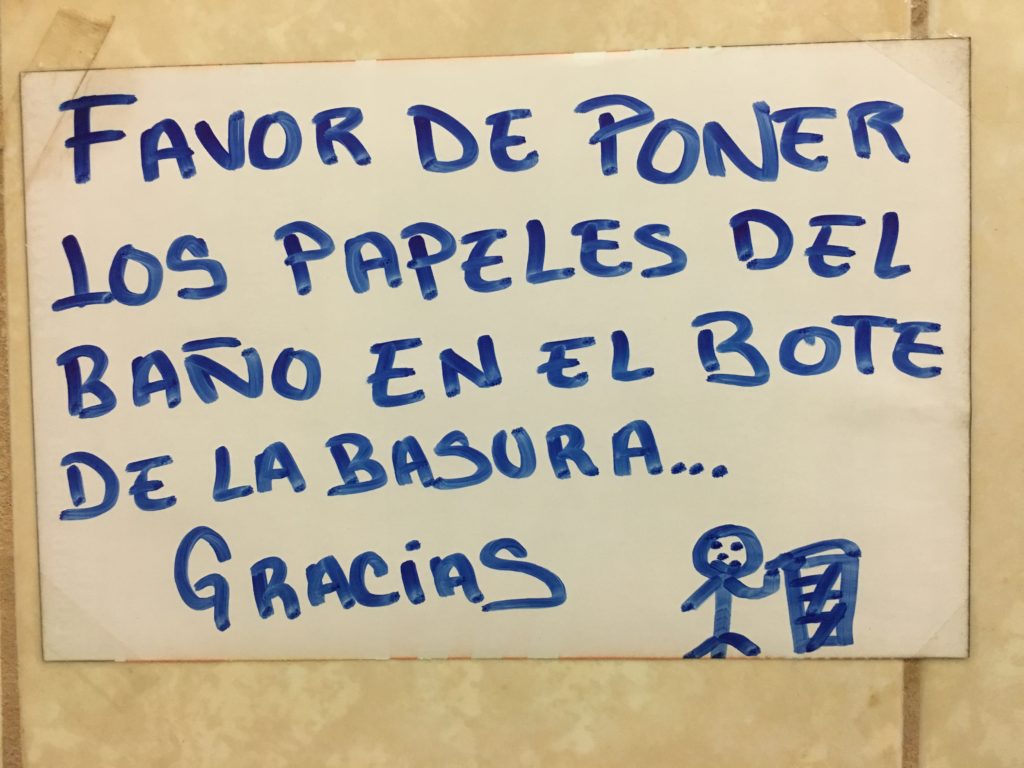
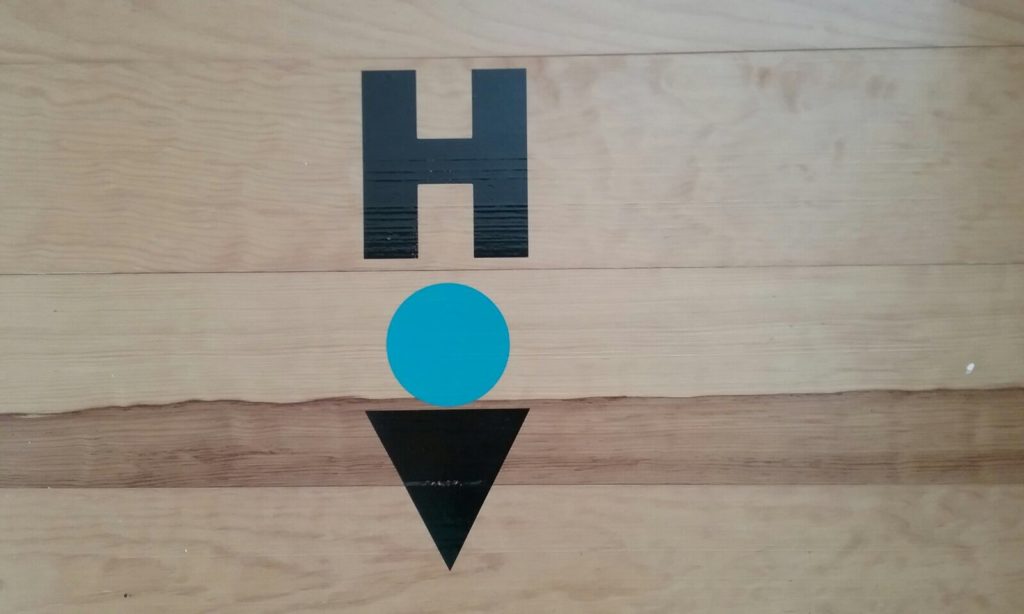
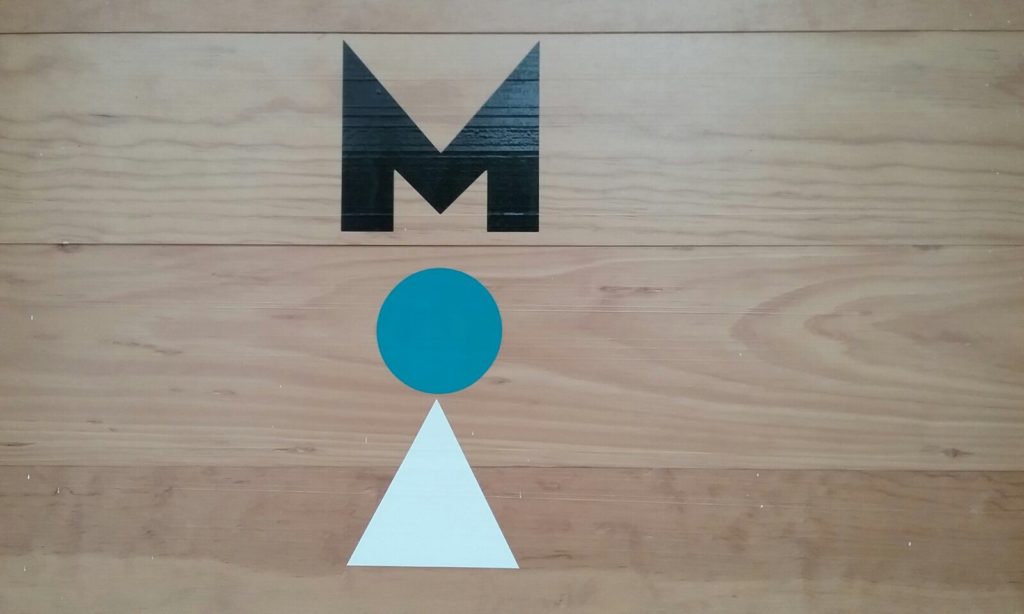
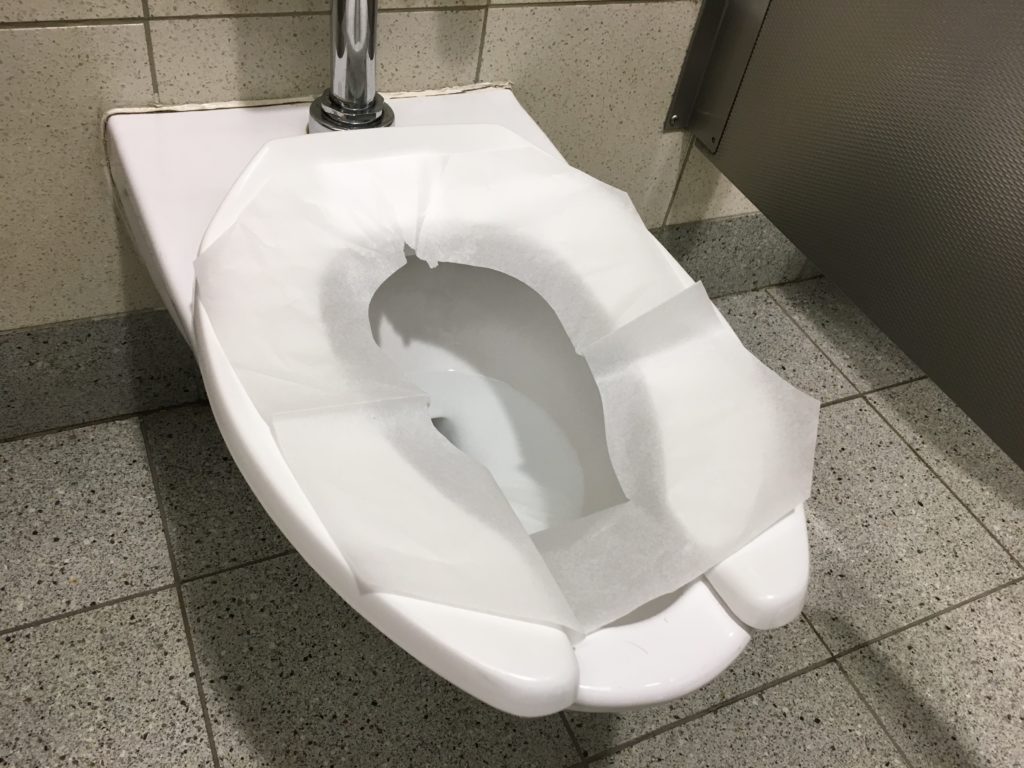
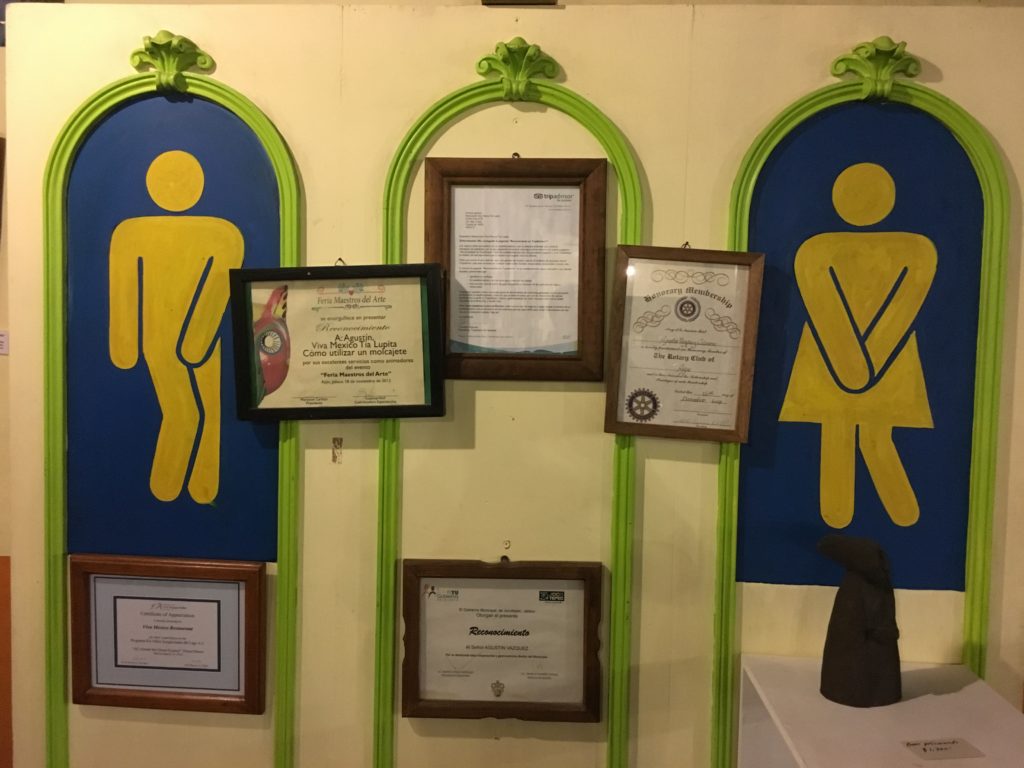

Ah, the nitty gritty of travel! Thanks for the tour!
You’re welcome, Ginny!
These are great! Is that kitty litter by the one toilet??? Or is it a composting toilet and you put a scoop in before you flush? I recognize the last one!! I’m going to reblog this one if you have a reblog function..otherwise with permission..
Thanks Judy! If I remember right, it’s wood shavings. You do put a scoop in, and I don’t think you actually flush. Yes, the last one is in Mexico and you were there (in the restaurant, anyway). You are welcome to reblog the post with my permission (thanks for asking). I don’t know anything about a reblog function, but I think if you click on the post, then copy and paste the address in the top, that should work.
Love this! I’ve been photographing toilets from around the world for over 15 years now and I love your collection!
Thanks Jaime! Would love to see your shots sometime 🙂 Any interesting specimens or customs I missed??
This is such an awesome post! The one thing I’m always worried about when travelling is what I’ll be faced with when I open the toilet door! I have to say though, I’m from England and I’ve never heard of a thunder box!
Thank you, Rachael! I’m glad you enjoyed the post 🙂 It’s fun to learn something new. Here’s a link I just found specifically about thunderboxes (if you google it there are lots of articles!)
https://en.m.wiktionary.org/wiki/thunderbox
I’d heard the term in the past, both in books and from British friends, though hadn’t known the details until I researched it a bit.